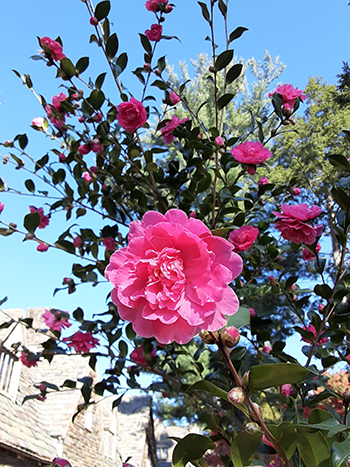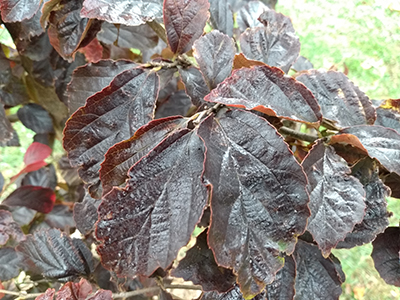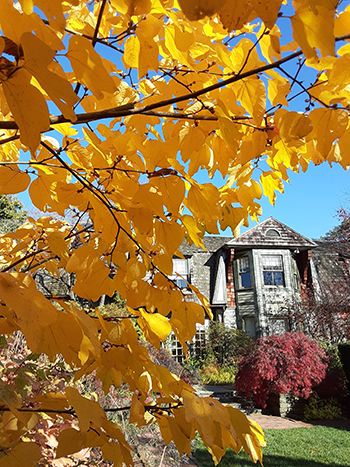
Plants of the Week: November 9

Fall blooming camellias add liveliness to the garden at a time of the year when many plants are turning drab and gardeners are hungry for floral pop. Offering smaller, yet no less exciting blooms than the later winter blooming C. japonica varieties, these early-flowering camellias put on a surprising display that is sure to steal the show in late fall. Camellia Autumn Spirit’ is a particularly early-blooming and cold-hardy cultivar boasting bright pink, double flowers in rich profusion. The lustrous and dark evergreen foliage of C. ‘Autumn Spirit’ makes a lovely backdrop for these shocking flowers and keeps this shrub attractive outside of its bloom period.
With genetics from C. sasanqua and C. oleifera, this camellia is very early to bloom and hardy to zone 7a. The early bloom period of C. ‘Autumn Spirit’ helps avoid the risk of an early cold snap killing the prized flower buds. C. ‘Autumn Spirit’ grows approximately 6’x 6’ and is best sited amongst other trees and shrubs in a protected location with part-shade. C. ‘Autumn Spirit’ is blooming prolifically by the corner of the Ben West Parking Lot and Bond Hall in Camellia Collection. Photo credit: R. Payne-Meyer

Parrotia subaequalis is a plant rarely seen, but one which you wouldn’t likely forget if you see it in autumn. Quite rare in both cultivation and wild settings this small tree is deserving of much greater recognition and use. Known as Chinese ironwood, P. subaequalis is the Far Eastern sibling of the Persian ironwood, Parrotia persica – members of the Hamamelidaceae family.
Exfoliating bark, clean foliage with a crenate margin, red witchhazel-like flowers, and attractive fall color are shared between the species, but the fall color of P. subaequalis takes the cake. With leaves and stature smaller than that of P. persica, P. subaequalis packs its punch come autumn, with leaves of yellow, orange, red, and pink hues – then richening to burgundy.
Like many plants of the witchazel family, P. subaequalis prefers a consistently moist, acidic soil, with shade from hot afternoon sun. Listed as zone 6a, I have a 5 year old P. subaequalis specimen growing eagerly at my zone 5b garden. A P. subaequalis specimen can be found in the lawn outside of Trotter Hall. photo credit: P. Erikson

Like a golden beacon, the foliage of Lindera obtusiloba draws the eye to the Terry Shane Teaching Garden, and invites you to enter the courtyard for closer inspection. The striking gold coloration highlights the curious leaf shapes that lend L. obtusiloba, the Japanese spicebush, much of its garden appeal. The leaves have an entire margin with rounded lobing and occur unlobed, bilobed (mitten) and trilobed (trident), much like the related sassafras albidum.
Like many members of the Lauraceae family, L. obtusiloba has aromatic plant parts, hence the common name spicebush. Native to Eastern Asia, this multi-stemmed, large shrub develops a wide vase shape, about 15’ x 15’. This plant can also be pruned into a small tree, such as the specimen outside of Bond Hall.
The yellow springtime flowers which occur on bare branches remind me of Cornus mas blooms and provide another lovely moment for this uncommon plant. L. obtusiloba is best sited in consistently moist soil in full sun to part shade; bright shade is ideal, and plants still produce golden fall color in deeper shade. L. obtusiloba is listed as 6a, but again, I have a specimen thriving in zone 5b. When literature is limited, don’t be afraid to push the zones! Photo credit: R. Payne-Meyer





No Comments